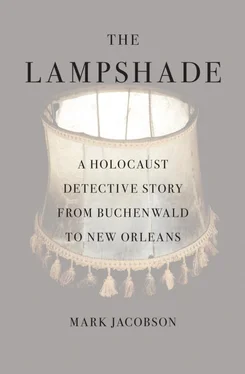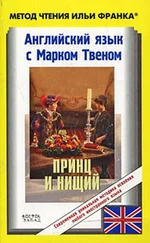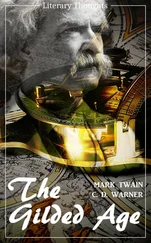I first saw Rabbi Uri in a picture on the Internet. Kippah on his thick mat of black hair, his young son in his arms, a huge smile on his face, Topolosky was talking with a full-headdressed Mardi Gras Indian. They seemed a good match, since the Mardi Gras Indians—black people dressed as Indians who famously sing and shout on Fat Tuesday—were, like Topolosky’s congregation, a dwindling bunch. With 30 percent of the Jewish population gone following the storm, Beth Israel was participating in an appeal to get Jews to move to New Orleans. Thirty thousand dollars in interest-free loans and half-price tuition at Hebrew school were among the financial incentives offered newcomers. Meanwhile, the Mardi Gras Indians, key to the town’s carnival tradition, were suffering demographic problems of their own. Between hip-hop and the crime situation, fewer and fewer young people wanted to spend the twenty weekends or so it took to sew the ornate parade costumes that when finished weigh as much as seventy-five pounds. Many Indians had died recently. Just months before Katrina, Allison “Tootie” Montana, the eighty-three-year-old leader of the Yellow Pocahontas “tribe,” the Big Chief of all Big Chiefs, appeared at the New Orleans City Council to decry what he called the NOPD campaign to “wipe out” the Indians, just as the real Native Americans of the area—the Chitimacha, the Acolapissa, and the Atakapa—had been wiped out. Chief Tootie barely got the sentence “This has got to stop!” out of his mouth when he suddenly clutched his chest and died of a heart attack on the spot. The Rhodes family handled the funeral, one of their biggest ever. As a musician himself who likes to call attention to the similarities between the raucousness of Mardi Gras and Purim, Rabbi Uri said he was “terribly saddened” to hear of Chief Tootie’s passing.
From his “Okay, let’s tee it up” invitation to his tiny congregation to begin the somewhat laid-back but still stirringly pious Friday-night services, where a Walmart-style screen separates the bare minyan of older men from the ladies, there was a lot to like about Rabbi Uri and what he called “modern Orthodoxy in the context of New Orleans lagniappe.” Rejecting the Shas Party idea that God had unleashed Katrina on New Orleans because of its paucity of Torah readers, Rabbi Uri said, “If Katrina is a divine disaster, then there is nothing to be done about it because we, as people, cannot know why God does what he does. Only a maniac would claim to know the mind of the Creator. But this was really a human disaster. The levees failed; they failed for several reasons, human reasons, which is why we are in control of how to respond.”
This sounded like someone who might consider presiding over the burial of the human skin lampshade. When I went to visit Rabbi Uri in his Metairie office, after a momentary shock he said, “I don’t see why I couldn’t do it. It is a probable body remnant. I’ll look over the texts to see if there is anything preventing it.” The shaymos idea was a potentially good one, Rabbi Uri said, “but I don’t know about a second line. I’ll check into the Halacha on brass bands to see if it is appropriate. I kind of doubt it, but you never know.”
Standing amid the graves of the Dispersed of Judah Cemetery, that more or less settled it, at least for a moment, I thought. Intellectually and practically, the lampshade could pass back into the earth in this place. I’d been halfway around the world with it. I’d done my part.
That was the working plan: to bury the lampshade in a Jewish cemetery, have Rabbi Uri and Shiya Ribowsky do the service, invite those who wanted to be there, and create the sort of “closure,” however artificial, that Mayor Nagin and every other politician liked to prattle on about when it became obvious that events were out of control and they had no clue what to do next. Skip Henderson, as part owner of the shade, was okay with the idea as long as the thing wasn’t buried in his backyard for his dog to dig up. “I can’t have Tina coming over in the middle of the night panting with it between her teeth like ‘Look what I found.’” A New Orleans funeral wasn’t a perfect end, but it was an end, and if the lampshade was more of a story than anything else, as Yehuda Bauer suggested, it had to stop sometime.
But there were snags, loose ends that couldn’t be ignored, which Dr. Volkhard Knigge, director of the Buchenwald Memorial, pointed out to me when I went to see him on a cold winter day in early 2009. Born in 1954 in Westphalia, son of a Lutheran priest, Dr. Knigge described his childhood surroundings as “a kind of deadening boredom, full of oppressive piousness.” The atmosphere changed during the 1968 demonstrations, when all of Europe “seemed to come back to life.” Seeing young people in the streets, saying what was not supposed to be said, convinced Knigge that “there were other kinds of angels in the world, another kind of heaven.” He went off to the university, where he studied Lacanian psychology, began to travel, married an Israeli artist, worked with Lutz Niethammer on an extensive German oral history project, and became the director of the Buchenwald Memorial in 1994. Owing to his longtime involvement with the camp, along with his customary attire of a black hat, long black coat, black shirt, and black jeans, Knigge has a reputation as something of a melancholy fellow. At least this was the impression I’d gotten from Hans Ottomeyer, the general director of the Deutsches Historisches Museum in Berlin.
I’d spoken to Professor Ottomeyer, a robust, red-faced man with a grand helping of metallic gray hair, on the recommendation of a friend who had met him at a gala in Berlin. According to my confidant, when the conversation turned to the matter of Third Reich—era artifacts and their proper representation in the museum context, Ottomeyer mentioned that he’d heard a rumor that a human skin lampshade had been found in America. Thinking this had to be the New Orleans shade (and marveling at the remarkable spread of such memes), my friend replied that Professor Knigge at Buchenwald had expressed interest in the object. “Well,” said Ottomeyer, “we can do whatever Knigge can do. I wouldn’t mind looking at that myself.” By the time I arrived in his sumptuous office on Unter den Linden with a grand view of Kaiser Wilhelm’s Berliner Dom, however, Professor Ottomeyer seemed to have changed his mind about the German Historical Museum’s involvement with the lampshade.
“There is an undue concentration on the darkness of the German history,” Ottomeyer said. “This is not to say there is not darkness. But there is light as well, as I’m sure you know. This is what we try to do here at the museum, present a balance. So it is best that you take this lampshade to Professor Knigge. He deals with this sort of object, and to tell the truth, I don’t know how he does it. Every day in that gloom, surrounded by those terrible things. I have a lot of respect and sympathy for him.”
Listening to this as he sat in his office in the former SS barracks at Buchenwald, Knigge sighed. “Well, he does have Hitler’s desk in his museum, but it is a very nice, very well made desk, I can assure you of that,” he said. Knigge did, however, agree with Ottomeyer’s assessment that Buchenwald was the proper place for the lampshade, at least at this moment, better than the German Historical Museum, better than a hole in the ground in New Orleans.
“It is too early to bury this lampshade,” Professor Knigge said during our first meeting. “It is not ready for the earth.” He ran his hand over the graying fuzz on his head and looked out the window. It had begun sleeting. Rain, sleet, snow—this was how it was in the Ettersberg in February, especially at the end of the Blood Road.
Читать дальше












